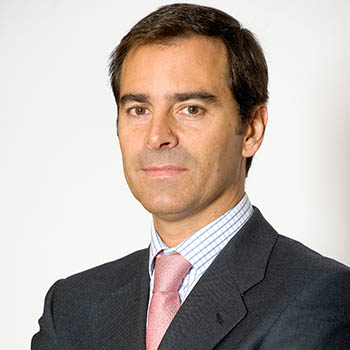NEW INVESTORS DRIVE PROJECT FINANCING

The largest fully nonrecourse project finance deal of 2014, in fact the largest ever, was the expansion of a liquefied nitrogen gas (LNG) facility near Freeport in Texas. Besides its sheer size, approximately $11 billion, the deal embodies key trends in the project finance space, which is expanding but not without challenges for traditional players.
In the first nine months of 2014, global project finance lending totaled nearly $178 billion, according to Thompson Reuters’ Global Project Finance Review. The figure represents a 17.9% increase from 2013. The most active market was Europe, the Middle East and Africa, though it actually suffered a 1.3% decline. The Americas experienced the biggest jump, nearly 60%. “Globally we have seen a very active transportation sector, as well as social infrastructure like universities, prisons, hospitals,” says Denis Stas de Richelle, global head of infrastructure and asset-based finance at Société Générale Corporate and Investment Banking. “In Europe, however, there’s been a reduction in the number of projects coming to market, largely because of public spending constraints in many countries.” These also hamper the enormous potential of developing countries, especially in Africa.
There are several notable elements of the Freeport LNG deal, which was handled by Australian firm Macquarie Capital. First of all, in an environment with too few projects and too much cash chasing yields, it was oversubscribed by more than a billion dollars. Additionally, the first stage of the project is financed by the Japanese government, via the Japan Bank for International Cooperation, and Japanese, or Japan-based, commercial banks, from the ever-present Sumitomo Mitsui Banking Corporation to The Bank of Tokyo-Mitsubishi UFJ to the Tokyo Branch of ING Bank. “We have seen a reshuffling of the competition,” says Carlos Milans del Bosch, global head of structured finance for BBVA. “Asian banks lead everywhere, and there are a number of local banks, like the State Bank of India, that are defending their position at home and slowly expanding into new markets.”
IFM Investors—a global fund manager owned by 30 pension funds—committed $1.3 billion in equity for the second phase of the Freeport LNG deal—demonstrating another broader market trend, the increasing participation of institutional investors. “There is a lot of liquidity around, which means increased competition from nonbank sources and continuous pressure on pricing and structures,” says Michael Dinham, head of infrastructure finance for ING Commercial Banking. “Banks are getting squeezed on the other side too, as governments still use multilateral bodies like the European Investment Bank to fund infrastructure even where there is ample private capital available.”
Higher capital requirements resulting from the financial crisis have simultaneously decreased banks’ appetite for relatively illiquid infrastructure assets, so much so that mini-perm (interim financing) structures for PPPs are becoming more popular, as the Freeport LNG deal also exemplifies. Banks’ increased liquidity also means the volume of loans relative to bonds is growing. “The terms of the loans are competitive, whereas a few years back the debt market was the only source of financing, at least for the highest-quality projects,” says BBVA’s Milans del Bosch.
Finally, the Freeport LNG expansion was driven by high energy prices and the shale gas boom in the US. Now that crude has been tumbling, the outlook is less clear. “The impact on capital expenditure budgets of oil and gas companies, and to what extent this postpones or derails existing projects, depends on how sustained the oil decline is,” says Paul Clifford, regional head of project and export finance for the Americas at Standard Chartered. The Lavaca Bay LNG terminal in Texas was put on hold at the end of 2014.
Where could the next impetus come from? “There is a lot more privatization that can happen,” says Dinham. “In Australia, for example, the federal government is keen to promote it across sectors and states, and in the EU there is pressure on countries to balance their budgets through privatization.” The plan by the European Commission to leverage public funds and guarantees to spur investment could also help. Last year Société Générale and Crédit Agricole CIB were joint lead arrangers in the deal for the enhancement of the A7 Motorway in Germany, the country’s largest PPP project and the first of its kind, as the European Investment Bank is providing part of the financing. According to SocGen’s Stas de Richelle, this could be a sign of things to come. “Benefiting from EIB guarantees, the deal combined bank debt with bond issuance with institutional investment,” he says. “It’s a groundbreaking structure that we will see much more of.”
Another impulse comes from new markets such as Turkey. BBVA, alongside other commercial banks and multilateral institutions, recently financed the first PPP in Turkey, a hospital in the southern city of Adana. But some countries—including Turkey—might not always be accessible for Western banks, as their domestic counterparts have an edge in terms of local knowledge and more leeway doing deals that don’t comply with environmental and social standards, like the Equator Principles, that European banks are bound by. However, recently French banks like Société Générale, BNP Paribas and Crédit Agricole have regained a place near the top.



